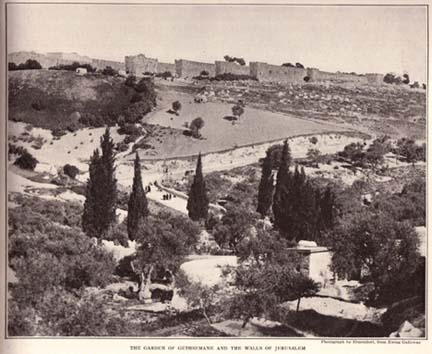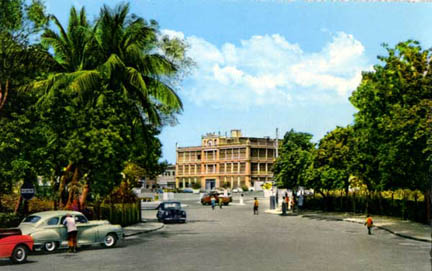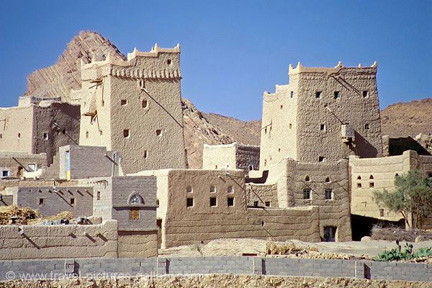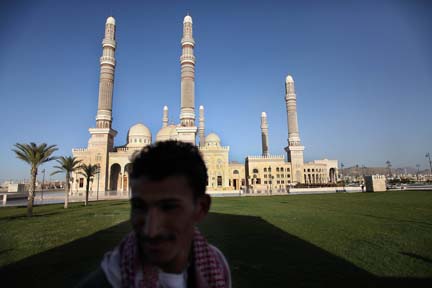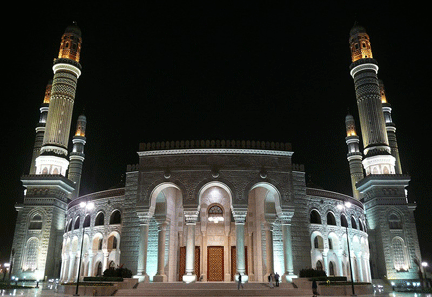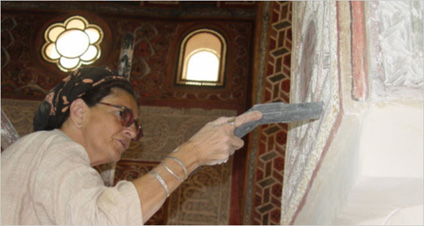
Selma Al-Radi at work at the Amiriya Madrasa; photo by Qais al-Awqati
In addition to the obituary previously posted, the New York Times has recently published this account of Dr. Selma Al-Radi.
Selma Al-Radi, Restored Historic Madrasa, Dies at 71
By MARGALIT FOX, The New York Times, October 14, 2010
On certain dark nights, as a Yemeni legend tells it, Sultan Amir ibn Abd Al-Wahhab would command his servants to set lanterns in the windows of the Amiriya Madrasa, the ornate palace complex he had commissioned at Rada, in southern Yemen. Then, with his daughter by his side, he would ride into the hills above town, to behold his vast edifice ablaze with light.
The sultan was a historical figure, the last ruler of the Tahirid Dynasty, which flourished in Yemen from the mid-15th to early 16th centuries. The Amiriya Madrasa, erected in 1504 and named for him, was then and is now again one of the great treasures of Islamic art and architecture.
Solidly built of limestone and brick, the Amiriya seemed destined to endure as the sultan’s monumental legacy. But after he was killed in battle in 1517, the complex was left to decay. The more puritanical rulers who followed him deemed its lavishness a distraction from the sober business of prayer.
That the Amiriya today stands resplendent after five centuries of neglect is due almost entirely to the efforts of one woman, the Iraqi-born archaeologist Selma Al-Radi, who was for many years a research associate at New York University’s Institute of Fine Arts. Continue reading Selma and the Madrasa →

